Washington Square Dermatology utilizes the incredible scientific advances in laser technology over the last twenty years to improve and treat conditions like wrinkles, acne scars, surgical or traumatic scars, brown/sun spots, facial redness, broken capillaries, fine lines, melasma, sagging skin, skin rejuvenation and stretch marks.
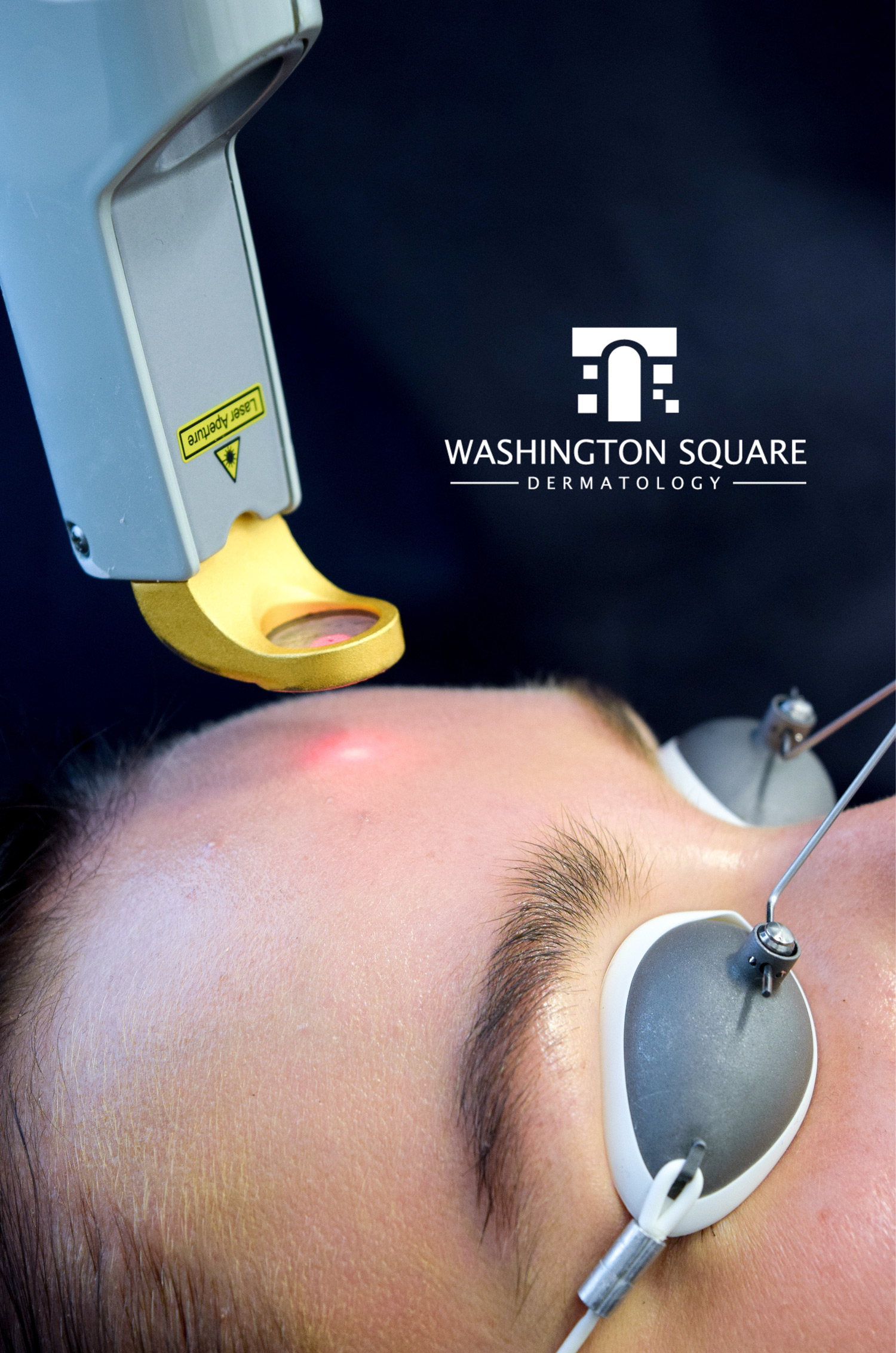
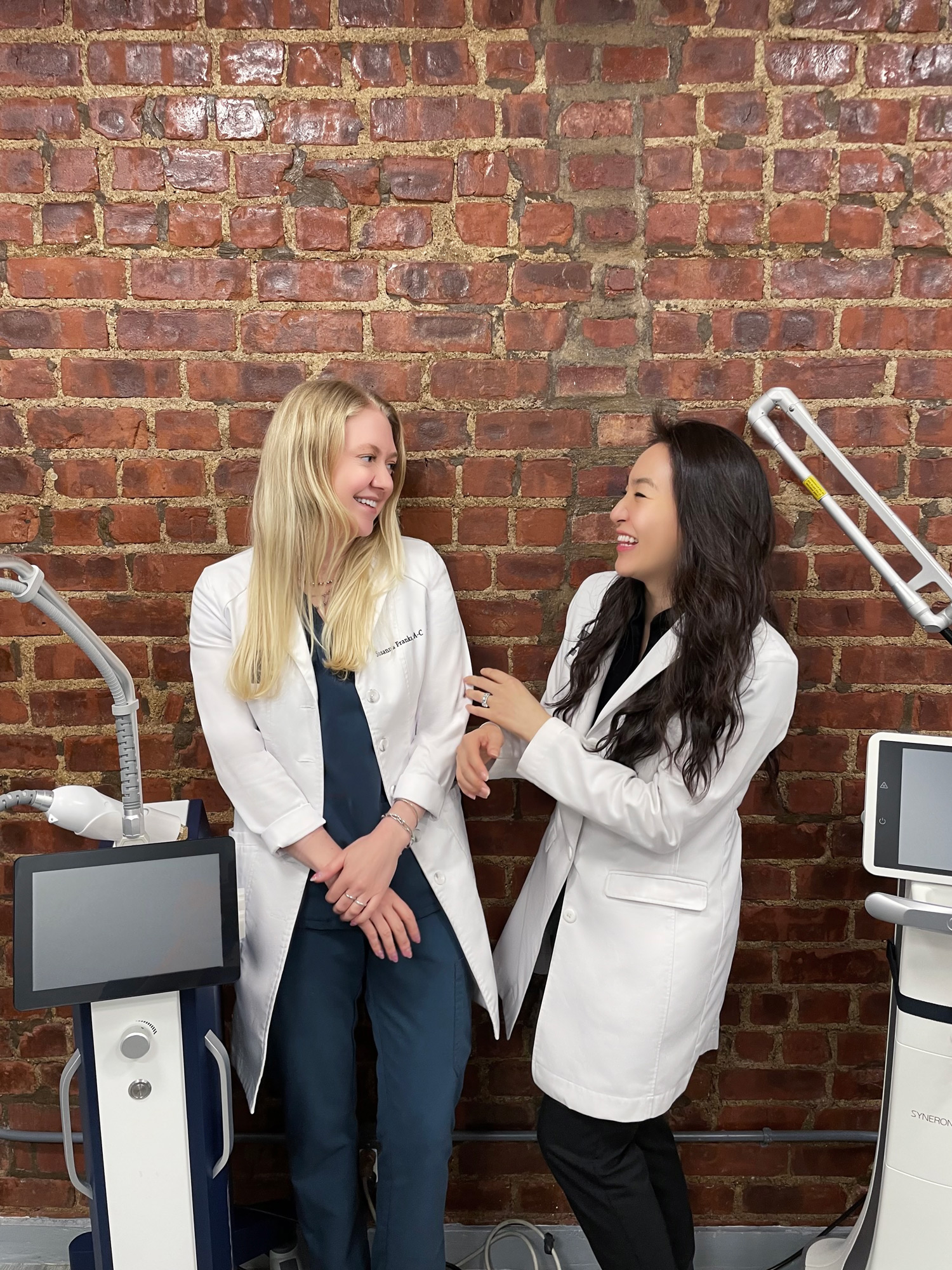
About Our Laser Dermatology Practice
Our providers combine a keen eye for aesthetic refinement with the latest technologies for optimal results. When planning laser therapy, it is important to receive treatment from an experienced provider. All of our laser treatments are always personally performed by our providers Dr. Samer Jaber, Dr. Michelle Park, and Susanna Franks, PA-C.
A consultation with one of our providers prior to treatment is necessary to determine the number of sessions required for a particular cosmetic or medical goal.
Let’s Talk
With extensive experience in medical, cosmetic, and laser dermatology, we take the time to thoroughly discuss your concerns and goals before customizing a treatment plan for you.
Fraxel Dual 1550/1927
The Fraxel Dual 1550/1927 is a powerful fractional, non-ablative laser therapy that is one of the most popular treatments in our office to enhance the skin’s overall appearance.
Fraxel is used to improve the appearance of wrinkles, fine lines, acne and surgical scars, brown spots, stretch marks, and enlarged pores. Just one treatment can result in smoother, younger looking skin with improved texture and tone. The Fraxel uses similar energy wavelengths as the Clear & Brilliant laser, but is much more powerful.
There are two wavelengths of the Fraxel laser: the superficial 1927 nm and the deeper 1550 nm. The 1927 setting is ideal for improving skin pigmentation from sun exposure, while the 1550 setting is better suited for the stimulation of collagen and reduction of scarring and wrinkles.
Fractional technology creates microscopic laser columns, which penetrate deep into the skin. The laser only treats a portion of the skin, leaving the surrounding area intact, accelerating the healing process. The Fraxel laser stimulates the body to heal the treated areas with new, healthy collagen and skin.
How is Fraxel performed?
Patients arrive to the office one hour prior to the treatment for topical numbing and if desired, oral medications to minimize discomfort. A Fraxel treatment typically takes between 20-30 minutes. After the Fraxel procedure, we apply a cooling and healing moisturizing mask.
Is Fraxel painful?
Depending on the depth of treatment, Fraxel can be uncomfortable, but with appropriate topical and oral medications we can minimize discomfort. We also offer ProNox, a nitrous gas system, that can significantly help minimize pain.
What areas can Fraxel treat?
Fraxel can be used anymore on the body. The most popular areas are the face, chest and hands.
How long does it take to see results from Fraxel?
Depending on treatment goals, multiple sessions and several months may be required to see the full benefits of Fraxel therapy.
For the treatment of wrinkles and acne scars, we typically recommend starting with a series of four Fraxel 1550 sessions scheduled one month apart.
Significant results are typically seen with a single treatment of the Fraxel 1927 for skin discoloration/sun spots.


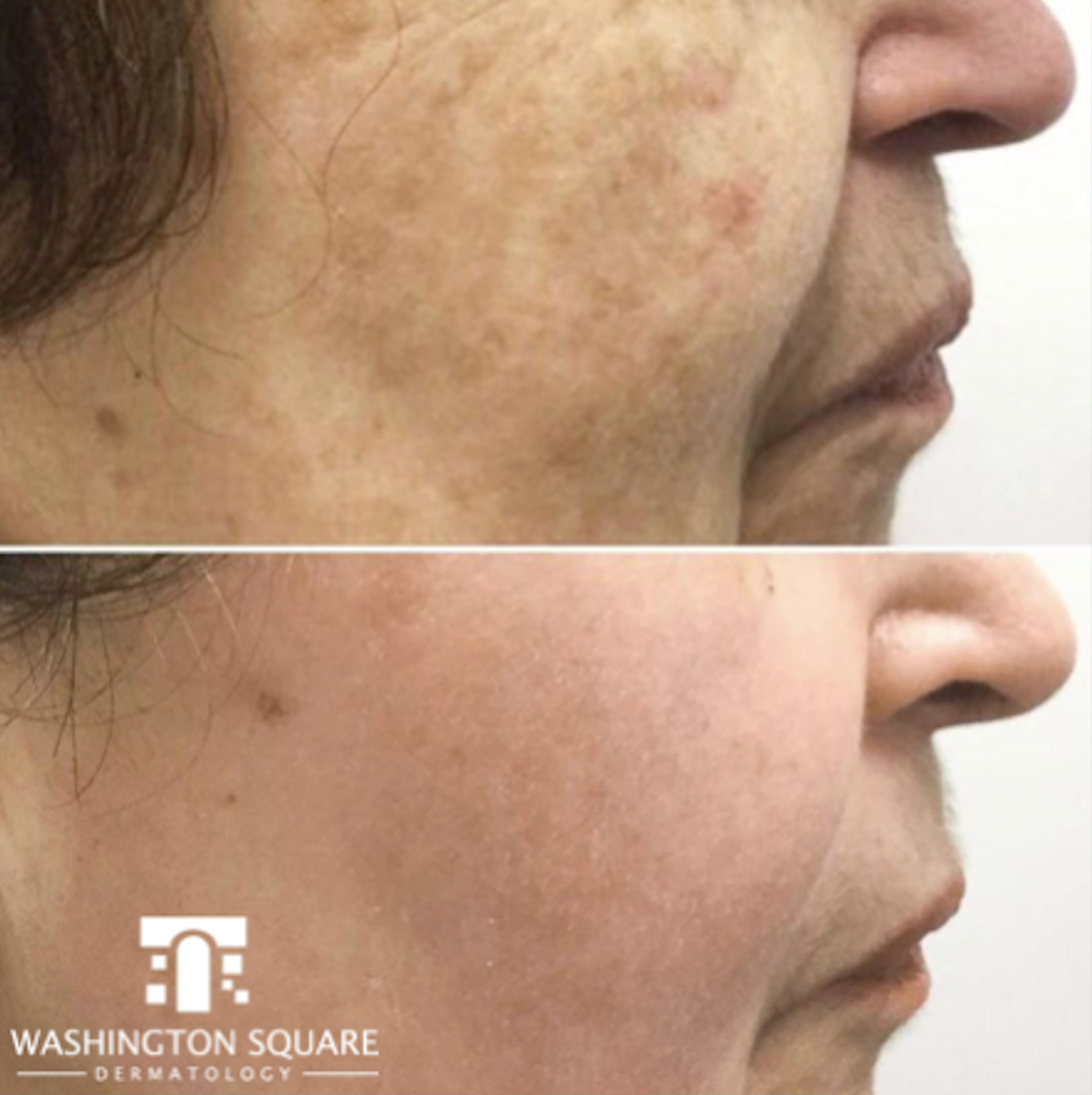
How much does Fraxel cost?
A Fraxel treatment for the entire face is $1,200, while a package of 4 treatments for the entire face is $4,000.
Prices for other areas vary, so it is best to schedule a cosmetic consultation to determine the cost for your individualized treatment.
Frequently Asked Questions About
Fraxel Laser Treatments
How should I prepare for Fraxel?
Stop any topical medicines that can irritate or inflame the skin at least one week prior to your Fraxel treatment (like topical retinoids or acids). It is also very important to make sure your skin is not tan prior to the procedure.
What should I expect after Fraxel?
You skin will feel sunburned, swollen and warm after the procedure. Your skin will be pink and flaky for typically 5-7 days while it is healing.
Are there any risks to Fraxel?
Risks of Fraxel laser include but are not limited to discomfort, redness, flaking/peeling, and discoloration. It is very important after Fraxel treatment to moisturize your skin extensively and minimize sun exposure. You can cause worsening discoloration if you do not adequately protect your skin from the sun after a Fraxel session.
Come See Why Our Patients Love Us!
TRUSTED BY OVER
HONORED TO HAVE OVER
PRIVILEGED TO SEE PATIENTS FROM ALL
Clear + Brilliant and Clear + Brilliant Permea
The Clear + Brilliant laser is a gentle treatment clinically proven to improve skin tone, texture, and minimize pore size. It is also a safe and effective treatment for melasma. Clear + Brilliant is a great introductory laser for patients who do not need an invasive treatment or prefer to avoid downtime. Patients notice improved skin appearance, rejuvenation, and a “youthful glow” almost immediately.
It is one of our most popular laser treatment due to its ability to provide both preventative and restorative effects with minimal downtime.
One twenty minute Clear + Brilliant session can leave skin feeling smoother and younger-looking. Routine treatments deliver lasting results that can keep patients looking younger for years to come. For patients desiring improvement in skin pigmentation or melasma, we use the Clear + Brilliant Permea.
Immediately following treatment, patients can expect some redness of treated areas. Patients can go to work the next day, but should expect some mild dryness for up to one week after therapy.
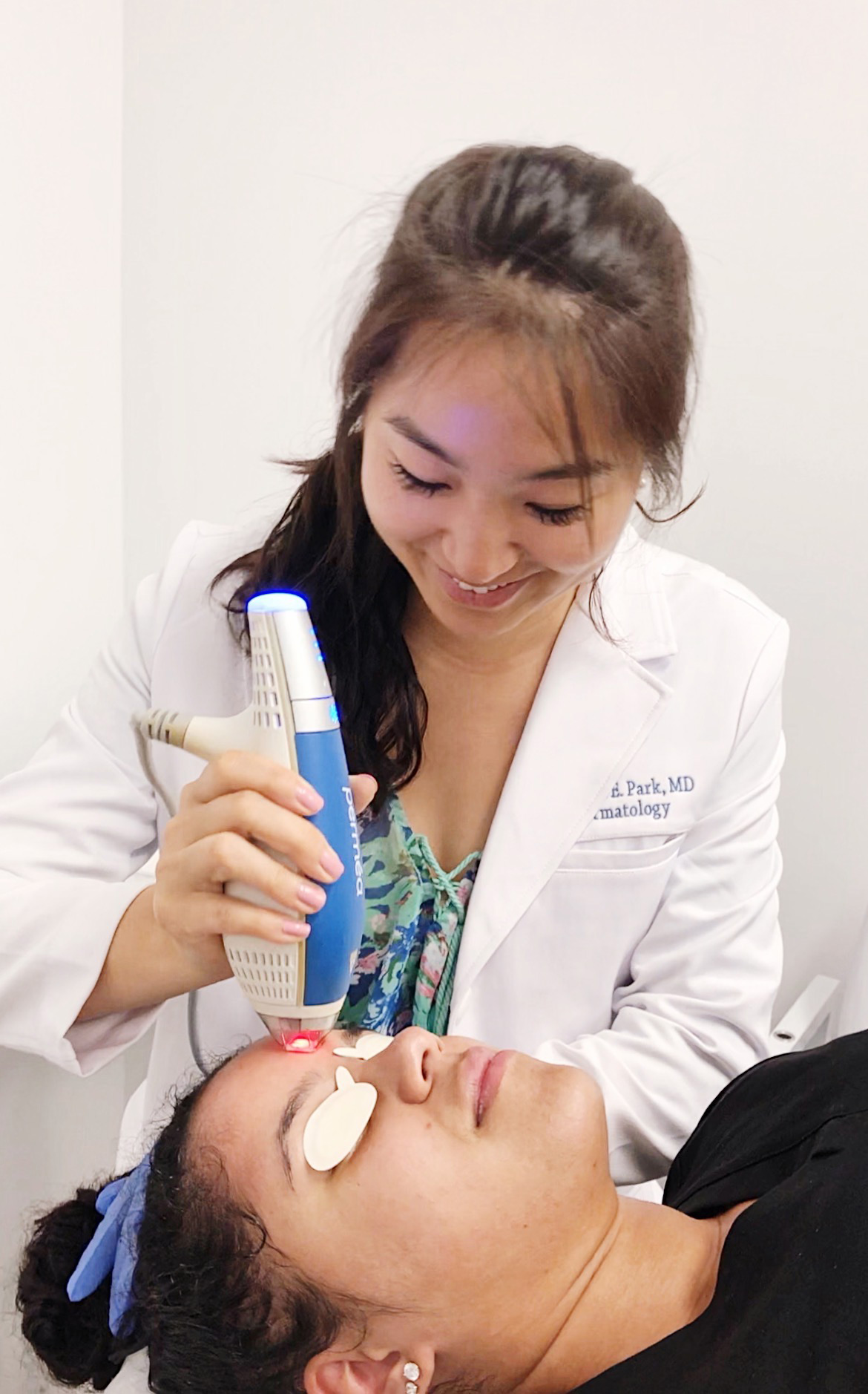
What patients are best suited for Clear + Brilliant?
The Clear & Brilliant “glow” is a favorite for patients of all ages and skin types. Those seeking to prevent or mildly improve the appearance of fine lines, discoloration, and skin texture may opt for this laser therapy.
Clear + Brilliant is safe for use on darker complexions, allowing patients of all skin types to enjoy the benefits of Clear + Brilliant.
How is Clear + Brilliant performed?
Patients arrive to the office one hour prior to the treatment for topical numbing and if desired, oral medications to minimize discomfort. A Clear + Brilliant treatment typically takes between 20-30 minutes. After the procedure, we apply a cooling and healing moisturizing mask.
Is Clear + Brilliant painful?
In our office, discomfort with Clear + Brilliant is minimized by the use of topical numbing medications prior to the procedure.
What areas can Clear + Brilliant treat?
Clear + Brilliant can be used anywhere on the body. The most popular treatment area is the face.
How long does it take to see results from Clear + Brilliant?
For optimal improvement, we recommend a series of Clear + Brilliant treatments scheduled one month apart.
Frequently Asked Questions About
Clear + Brilliant Laser Treatments
How much is Clear + Brilliant?
A Clear + Brilliant treatment for the entire face is $600, while a package of 4 treatments for the entire face is $2,000. Prices for other areas vary, so it is best to schedule a cosmetic consultation to determine the cost for your individualized treatment.
How should I prepare for Clear + Brilliant?
Stop any topical medicines that can irritate or inflame the skin at least a week prior to your Clear + Brilliant treatment (like topical retinoids or acids). It is also important to make sure your skin is not tan prior to the procedure.
What should I expect after Clear + Brilliant?
You skin will feel sunburned, swollen and warm immediately after the procedure. The next day your skin will feel dry, but look almost back to normal.
Are there any risks to Clear + Brilliant?
Risks of Clear + Brilliant include but are not limited to discomfort, redness, flaking/peeling, and discoloration. It is very important after Clear + Brilliant to moisturize your skin extensively and minimize sun exposure. You can cause worsening discoloration if you do not adequately protect your skin from the sun after a Clear + Brilliant session.
Excel-V (KTP and Nd:YAG)
The Excel-V laser is used to treat broken capillaries and generalized redness of rosacea, poikiloderma (a reddish discoloration on the neck from sun damage), cherry angiomas, and red scars. It is also effective in the treatment of small veins on the face, body, and legs.
An Excel-V laser treatment typically takes between fifteen and thirty minutes but varies depending on the size of the treatment area. A cooling gel is applied before the procedure to minimize any discomfort, which most patients equate to a rubber band snapping the skin. Depending on the type of treatment, mild redness, bruising and swelling may occur for two to three days after the procedure. Most of our patients see a significant result after one treatment, but depending on the severity of the skin condition, a series of treatments may be necessary.
How does the Excel-V (KTP + NDYAG) laser work?
Excel-V delivers a focused energy pulse that targets the color red without damaging the underlying skin.
What are the benefits of Excel-V?
Excel-V is one of the most popular lasers in dermatology as it can be used to treat a variety of conditions. It is most commonly used for treatment of the redness and broken capillaries of rosacea, but it can also be used to improve red scars, cherry angiomas, and leg veins.
What patients are best suited for Excel V?
Patients seeking to improve the appearance of red scars, redness and broken capillaries of rosacea, leg veins and cherry angiomas are great candidates for Excel-V. Excel-V is safest for use on those of lighter skin types.
How is Excel-V performed?
The skin is cleaned prior to the procedure and then a cooling gel is applied. Appropriate eye protection is used. After the Excel-V therapy, ice packs are applied.
Is Excel-V painful?
Excel-V is very well tolerated. Most of our patients equate it to a rubber band snapping the skin.
What areas can Excel-V treat?
Excel-V can be used anywhere on the body. The most popular treatment area is the face.

Frequently Asked Questions About
Excel-V Laser Treatments
How long does it take to see results from Excel-V?
For the treatment of the redness of rosacea and red scars, several treatments one month apart is necessary. For the treatment of capillaries, leg veins, and cherry angiomas you can see improvement with one treatment although several treatments may be necessary.
How much is Excel-V?
An Excel-V treatment ranges from $250- $750 depending on the treatment area per session. Prices vary, so it is best to schedule a cosmetic consultation to determine the cost for your individualized therapy plan.
How should I prepare for Excel-V?
Stop any topical medicines that can irritate or inflame the skin at least a week prior to your Excel-V treatment (like topical retinoids or acids). It is also important to make sure your skin is not tan prior to the procedure.
What should I expect after Excel-V?
You skin will feel red, swollen and warm immediately after the procedure. You can have some minor swelling, redness and bruising for several days after treatment.
Are there any risks to Excel-V?
Risks of Excel-V include but are not limited to discomfort, redness, bruising and discoloration. It is very important after Excel-V to ice your skin and minimize sun exposure. You can cause worsening discoloration if you do not adequately protect your skin from the sun after an Excel-V session.
CO2RE Fractional Ablative CO2 Laser
There is no treatment like a CO2RE Fractional ablative C02 laser. Skin can look smoother and younger with just one treatment!
The laser works by creating microscopic columns of energy into the superficial and deeper layers of the skin. When these microscopic injuries heal, new and healthy skin develops with increased collagen and a dramatic improvement in skin discoloration and overall skin rejuvenation.
What conditions is the CO2RE Fractional ablative C02 laser commonly used for?
Popular for treating everything from wrinkles, sun damage, acne scarring, brown age spots, fine lines, scars, sagging eyelid skin; the CO2RE fractional C02 laser can perform life changing improvements in your skin.
The Fractional CO2 RE is a wonderful non-invasive anti-aging treatment that on the right patient and when performed properly gives safe and amazing results.
A single CO2RE treatment can result in a dramatic improvement in your skin; there is no treatment like the CO2RE and the results can be remarkable!
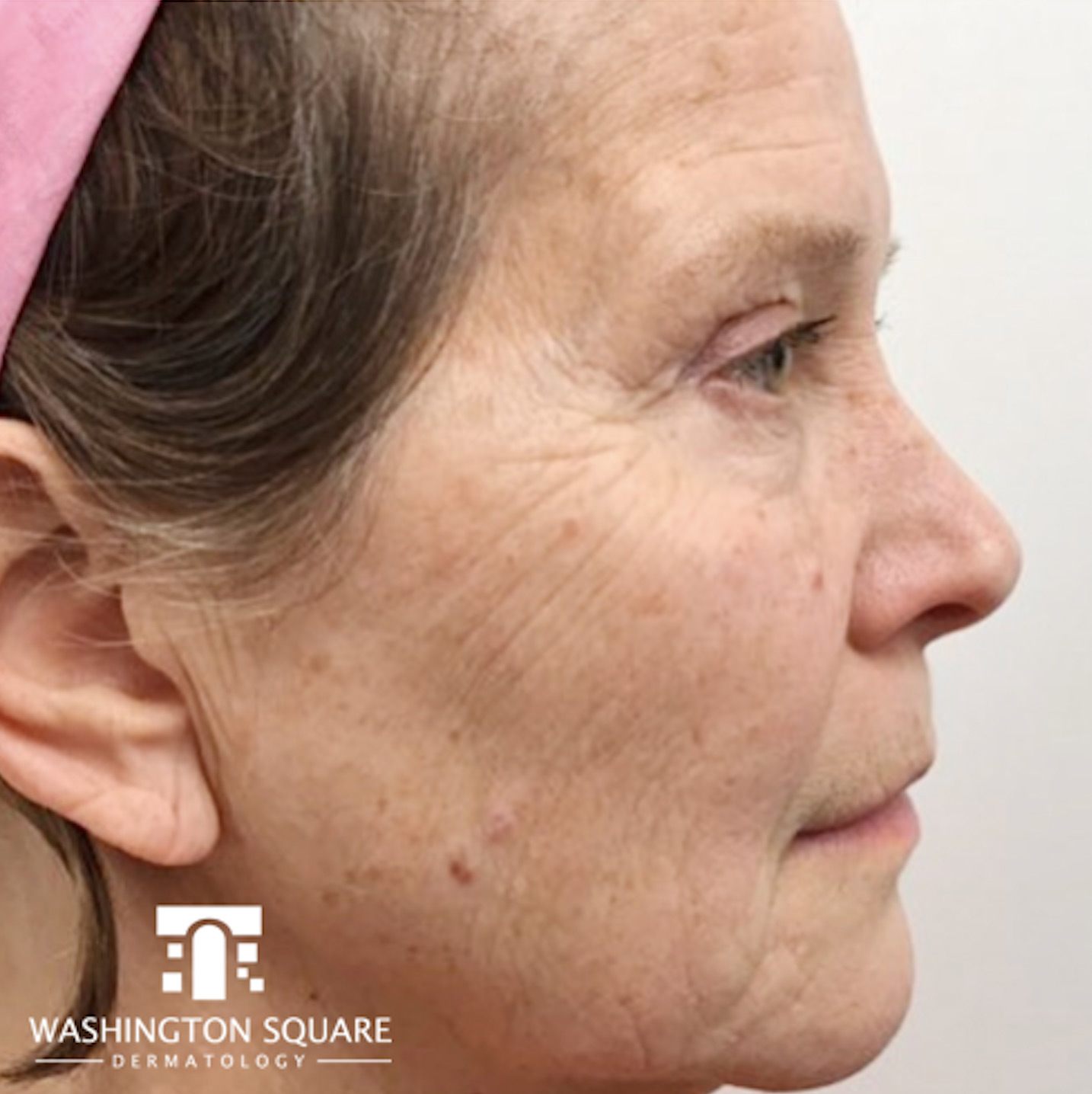
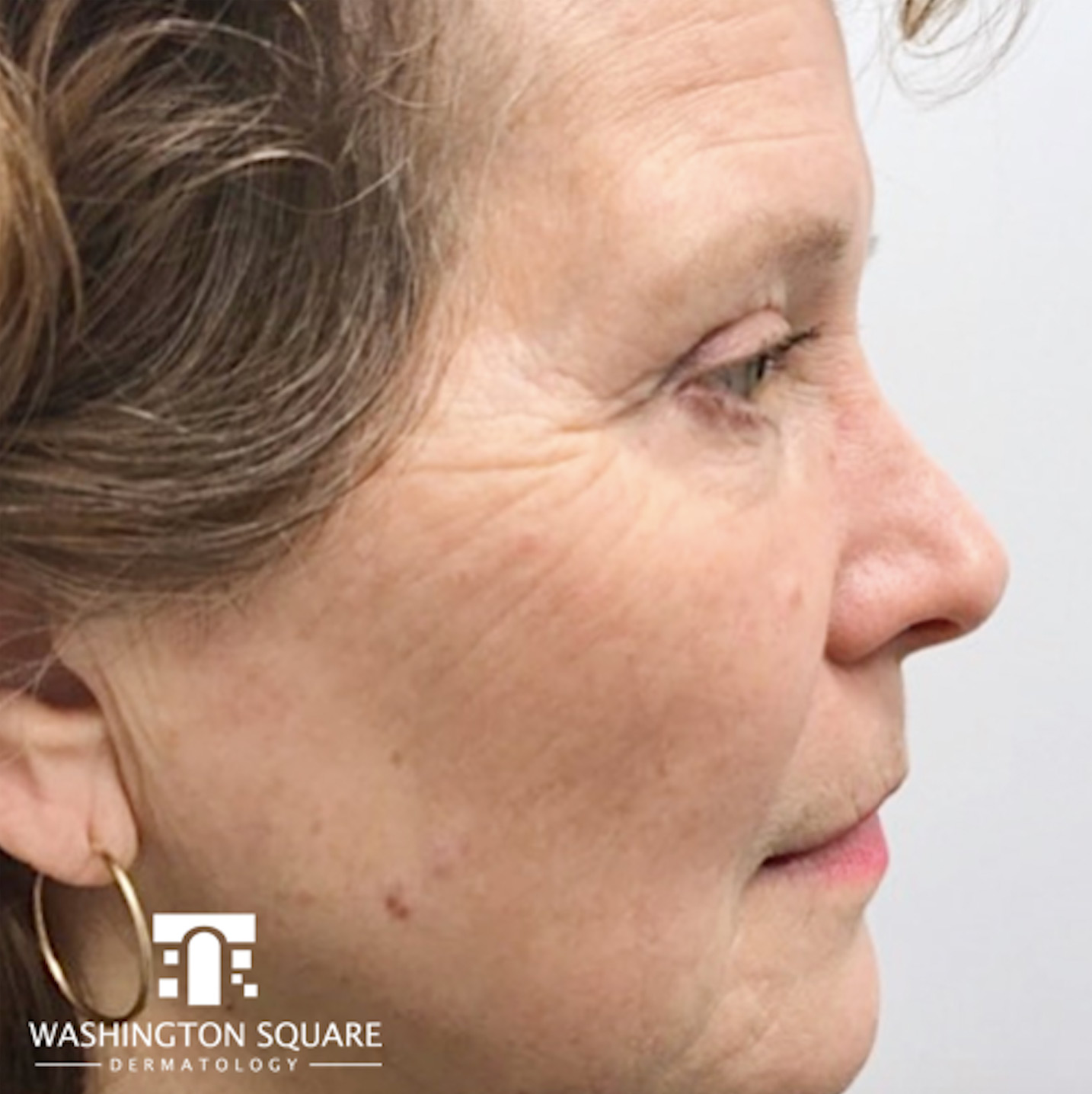
What are the benefits of treatment with CO2RE Fractional ablative C02 laser?
The C02RE laser can be used to improve wrinkles, sun damage, acne scarring, brown age spots, fine lines, discoloration, scars and even sagging eyelid skin! A single treatment with CO2RE can wipe away years of sun damage, resulting in smooth skin that radiates youthfulness.
What patients are best suited for CO2RE Fractional ablative C02 laser?
This high energy laser device is most appropriate for patients desiring a dramatic improvement in skin texture, wrinkles, fine lines, discoloration, and scarring. It can be used in all ages but it is safest on those of lighter skin types.
How is CO2RE Fractional ablative C02 laser?
Patients arrive to the office one hour prior to the treatment for topical numbing and oral medications to minimize discomfort. A CO2RE treatment typically takes around 1 hour. After the procedure, we apply a cooling and healing moisturizing mask.
Is C02RE Fractional ablative C02 laser painful?
The C02RE can be uncomfortable, but with appropriate topical and oral medications we can minimize discomfort. We also offer ProNox, a nitrous gas system, that can significantly help minimize pain.
What areas can C02RE Fractional ablative C02 laser?
CO2RE can be used anywhere on the body. The most popular treatment area is the face.
How long does it take to see results from C02RE Fractional ablative C02 laser?
Most patients require just one C02RE session for optimal skin resurfacing. Improvement in wrinkles, discoloration, scarring, and texture are initially visible 2-4 weeks after treatment, while final results can take up to six months.


Frequently Asked Questions About
C02RE Laser Treatments
How is C02RE Fractional ablative C02 laser different than the Fraxel laser?
It is much more powerful than the Fraxel laser, and much more dramatic improvement can be achieved with just one session versus several sessions for the Fraxel laser.
How much does C02RE cost?
A C02RE treatment ranges from $1,500 to $4,000 depending on the treatment, so it is best to schedule a cosmetic consultation to determine the cost for your individualized therapy plan.
How should I prepare for C02RE?
Stop any topical medicines that can irritate or inflame the skin at least a week prior to your C02RE treatment (like topical retinoids or acids). It is also important to make sure your skin is not tan prior to the procedure. You will be given oral antivirals and antibiotics to start prior to the treatment and written aftercare instructions.
What should I expect after C02RE?
You will be very red and raw after the procedure. We usually recommend our patients commit to staying home for 7 days after this treatment as this treatment does have significant downtime.
Are there any risks to C02RE?
Risks of C02RE laser include but are not limited to discomfort, redness, flaking/peeling, infections, worsening scarring, and discoloration. It is very important after C02RE treatment to follow the detailed before and aftercare instructions and minimize sun exposure. You can cause worsening discoloration if you do not adequately protect your skin from the sun after a C02RE session.
Ultherapy
Ultherapy is a noninvasive procedure that uses ultrasound energy to lift and tighten skin on the face, neck, and chest. Ultrasound energy heats the deep layers of the skin, creating microscopic injuries to the same layer that is lifted during a facelift. As the skin heals, new collagen and elastin is produced, creating skin tightening and a lift effect.
Ultherapy is a great option for patients who are not ready for an invasive surgical procedure and prefer a noninvasive lift to a surgical facelift.
Popular treatment areas include the lower face for a tighter jawline and minimized double chin, the brow to improve lid sagging, as well as the neck for firming and tightening of the skin.
There is some minor discomfort during the procedure, which is managed with oral medications and ProNox nitrous gas in our office.
Optimal results are seen three to six months after the procedure.
What differentiates Ultherapy versus other invasive procedures is that there is minimal downtime. After Ultherapy, patients look almost normal with mild swelling and can go out to dinner, or go back to work.
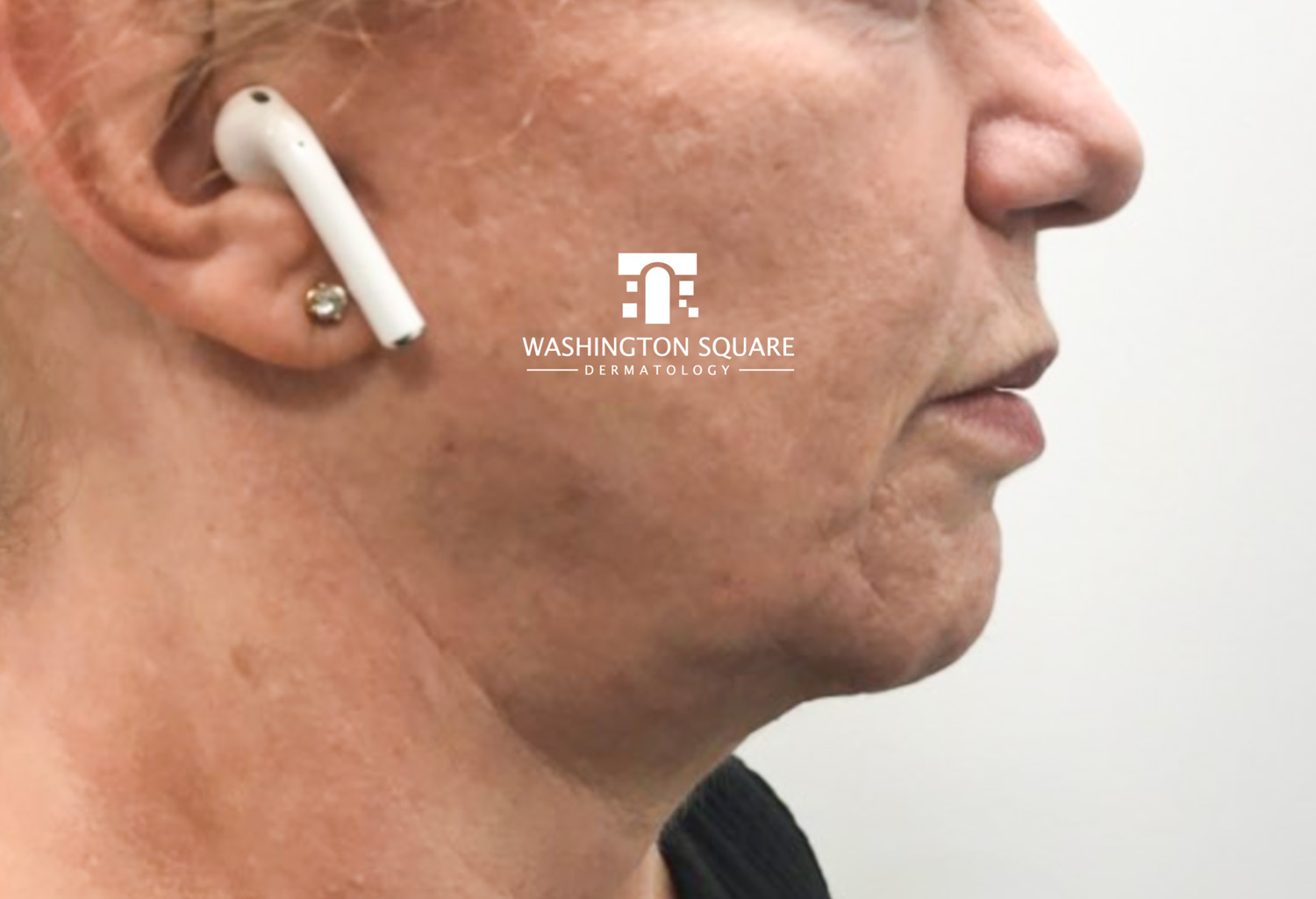
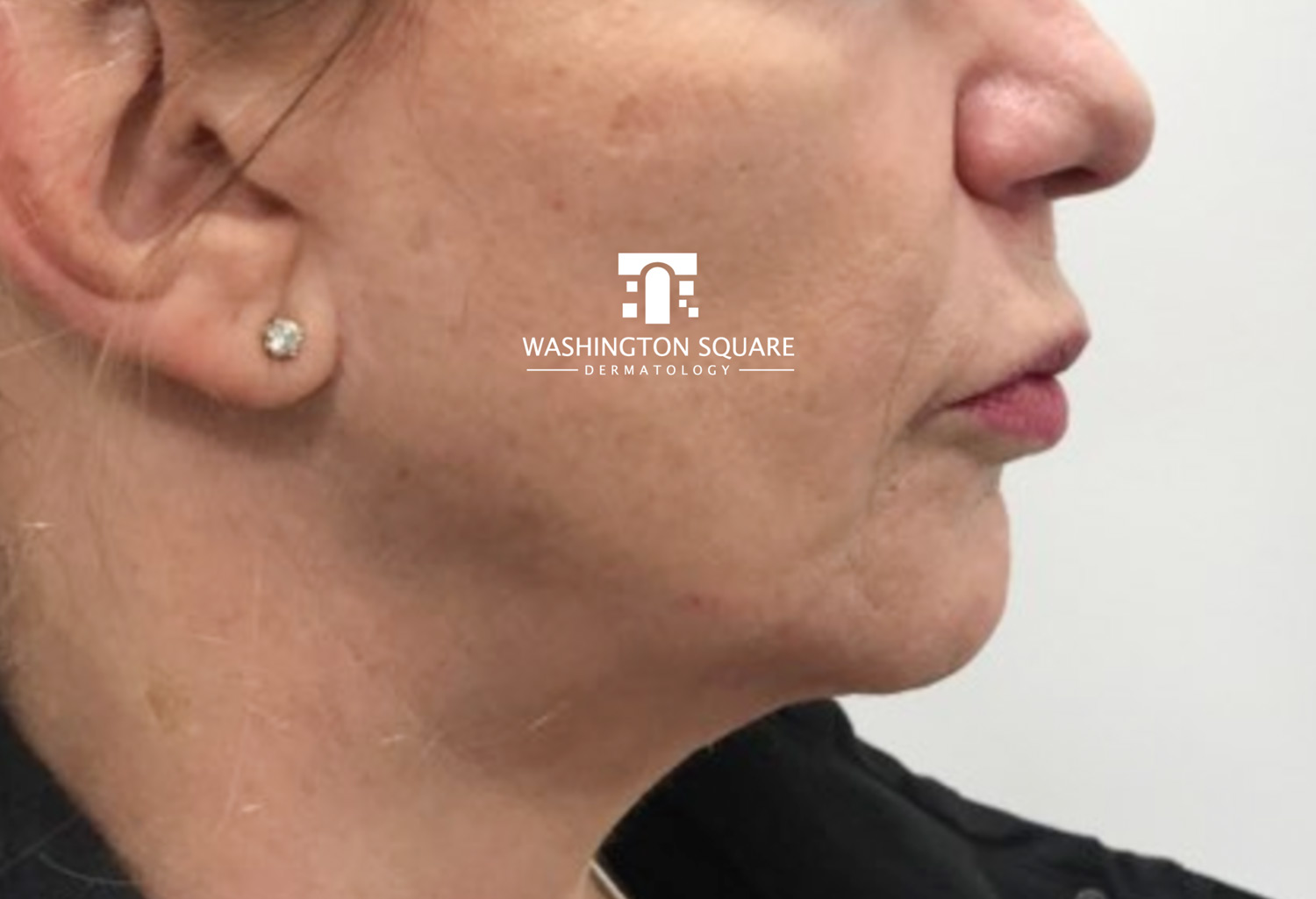
What Is Ultherapy?
Ultherapy utilizes non-invasive, non-surgical ultrasound technology to lift and tighten the skin. The most popular areas treated with Ultherapy are the neck, jaw line, lower face, and eyebrows.
Ultherapy creates microscopic injuries in the deeper layer of the skin, creating new collagen and elastin which over time results in skin tightening and lifting. Patients that choose Ultherapy aren’t ready for a surgical facelift, but want to improve their sagging skin.
How does Ultherapy work?
Ultherapy uses ultrasound energy to safely heat the deeper layers of the skin. This stimulates the body to heal and create collagen and elastin, and over the course of 3-6 months after Ultherapy your skin will be more youthful with increased skin tightening and lifting.
Frequently Asked Questions About
Utherapy Laser Treatments
What patients are best suited for Ultherapy?
Ultherapy is most appropriate for patients with mild to moderate skin laxity and is a great option for patients not wanting an invasive surgical procedure. Typically we find patients under 60 benefit more from Ultherapy as younger patients see more dramatic results.
Ultherapy is not a substitute for a facelift. If you have a significant amount of skin laxity, Ultherapy is not a great option for you.
Ultherapy is safe for patients of all skin types.
How is Ultherapy performed?
Patients arrive to the office one hour prior to the treatment for oral medications to minimize discomfort. An Ultherapy treatment typically takes between 30-120 minutes depending on the treatment area.
Is Ultherapy painful?
Ultherapy can be uncomfortable, but with appropriate topical and oral medications we can minimize discomfort. We also offer ProNox, a nitrous gas system, that can significantly help minimize pain. After the procedure there is minimal discomfort.
What areas can Ultherapy treat?
Ultherapy works best for mild to moderate loose and saggy skin and can be used anywhere on the face or body. The most popular treatment area is the face, particularly the lower face, jaw line, neck and eyebrows.
Can Ultherapy be combined with other treatments?
Ultherapy is often combined with other treatments depending on our patient’s goals. Our patients that choose Ultherapy often do laser treatments like the Fraxel or C02RE that target the top lasers of skin, as Ultherapy targets the deeper layers. Patients can also combine Ultherapy with filler injections to improve lower face sagging, and to contour the face, jawline and chin.
How long does it take to see results from Ultherapy?
Ultherapy uses your bodies natural healing to generate new collagen and elastin. You will see initial results over 2-3 months, but the final results can take up to 6 months.
How much does Ultherapy cost?
An Ultherapy treatment ranges from $1,000 to $5,000 depending on the areas treated, so it is best to schedule a cosmetic consultation to determine the cost for your individualized therapy plan.
How should I prepare for Ultherapy?
Stop any topical medicines that can irritate or inflame the skin at least a week prior to your Ultherapy treatment (like topical retinoids or acids).
What should I expect after Ultherapy?
You may have some mild redness, tenderness, and swelling after an Ultherapy treatment. As Ultherapy only targets the deeper areas of the skin, the skin barrier is not affected, allowing you to go to work the next day.
Results can take 3-6 months after Ultherapy.
Are there any risks to Ultherapy?
All procedures have potential risks, but Ultherapy is a safe procedure when done by an experienced provider.
Ultherapy is different from other cosmetic treatments as during the procedure the treatment area is visualized with ultrasound. As such it is very important that Ultherapy is performed by an experienced provider. In our office Dr. Michelle Park MD and Susanna Franks PA-C are our Ultherapy experts.
Common side effects of Ultherapy include swelling, tingling, bruising, numbness and skin sensitivity. Rare side effects include scarring.
Radiofrequency (RF) Microneedling
Radiofrequency (RF) Microneedling is a powerful, minimally invasive procedure which combines the benefits of traditional microneedling with RF energy. RF Microneedling can dramatically rejuvenate your skin, improving acne scars, skin texture, wrinkles, fine lines and even stretch marks. In our office we use the Secret RF Microneedling system.
What is the difference between RF Microneedling and Traditional Microneedling?
Microneedling is an extremely popular treatment in our office; with several sessions you can have dramatic improvements in skin texture, wrinkles and scarring. The advantages of RF microneedling is that it can penetrate deeper than traditional microneedling.
RF microneedling also adds deep RF energy to the microneedling procedure increasing collagen and elastin production. RF Microneedling allows for the targeting of the deep layers of the skin, with minimal risk of damaging the surface of the skin.
This ability to deliver energy directly to the deeper layers of the skin, bypassing the superficial layers is what makes RF microneedling a much safer treatment for patients of color than other energy devices.
How is RF Microneedling performed?
Patients arrive to the office one hour prior to the treatment for topical numbing and if desired, oral medications to minimize discomfort. A RF microneedling treatment typically takes between 20-30 minutes.
Is RF Microneedling painful?
Depending on the intensity of treatment, RF microneedling can be uncomfortable, but with appropriate topical and oral medications we can minimize discomfort. We also offer ProNox, a nitrous gas system, that can significantly help minimize pain.
What areas can RF Microneedling treat?
RF microneedling can be used anymore on the body. The most popular areas are the face, eyelids, neck and chest.
Is RF Microneedling safe for patients of color?
Yes! RF microneedling is a wonderful treatments for patients of color as the RF energy is targeted to the deeper layers of the skin, minimizing the risk of skin discoloration post treatment.
How long does it take to see results from RF Microneedling?
Depending on treatment goals, multiple sessions and several months may be required to see the full benefits of RF microneedling. We typically recommend starting with a series of four RF microneedling sessions scheduled one month apart.
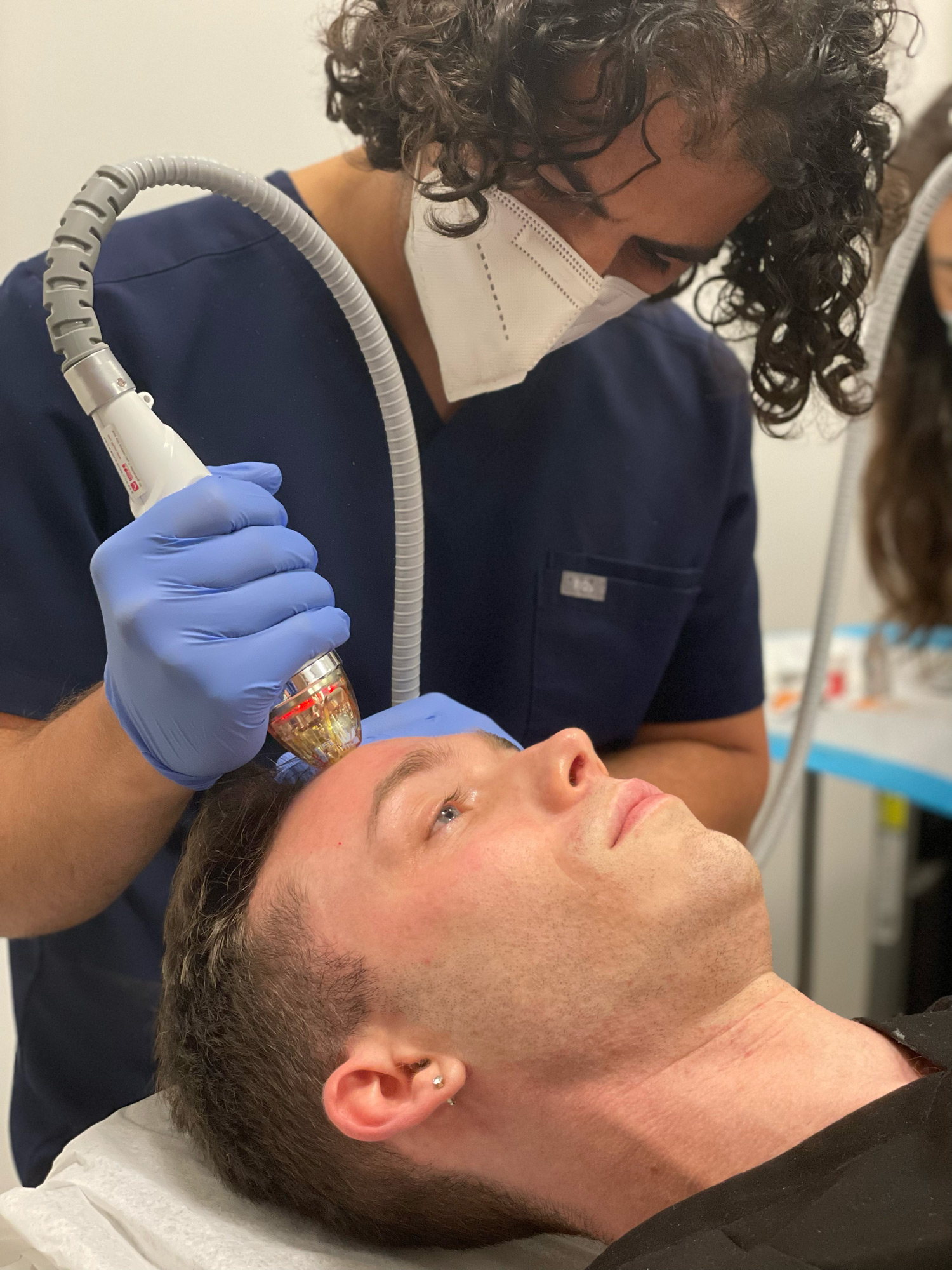
Frequently Asked Questions About
Radiofrequency Microneedling Treatments
How much does RF Microneedling cost?
A RF microneedling treatment for the entire face is $1200, while a package of 4 treatments for the entire face is $4000. Prices for other areas vary, so it is best to schedule a cosmetic consultation to determine the cost for your individualized treatment.
How should I prepare for RF Microneedling?
Stop any topical medicines that can irritate or inflame the skin at least one week prior to your RF microneedling treatment (like topical retinoids or acids). It is also very important to make sure your skin is not tan prior to the procedure.
What should I expect after RF Microneedling?
Your skin is typically red and slightly swollen for several days post treatment. The redness is mild, and better than what is seen with other laser devices (like the Fraxel). Depending on the intensity of the treatment you may have a grid like pattern on your face for several days. There is little or no discomfort after the procedure.
Are there any risks to RF Microneedling?
Risks of RF microneedling include but are not limited to discomfort, redness, flaking/peeling, and discoloration. It is very important after RF microneedling to follow the post care instructions and minimize sun exposure. You can cause worsening discoloration if you do not adequately protect your skin from the sun after a RF microneedling session.
